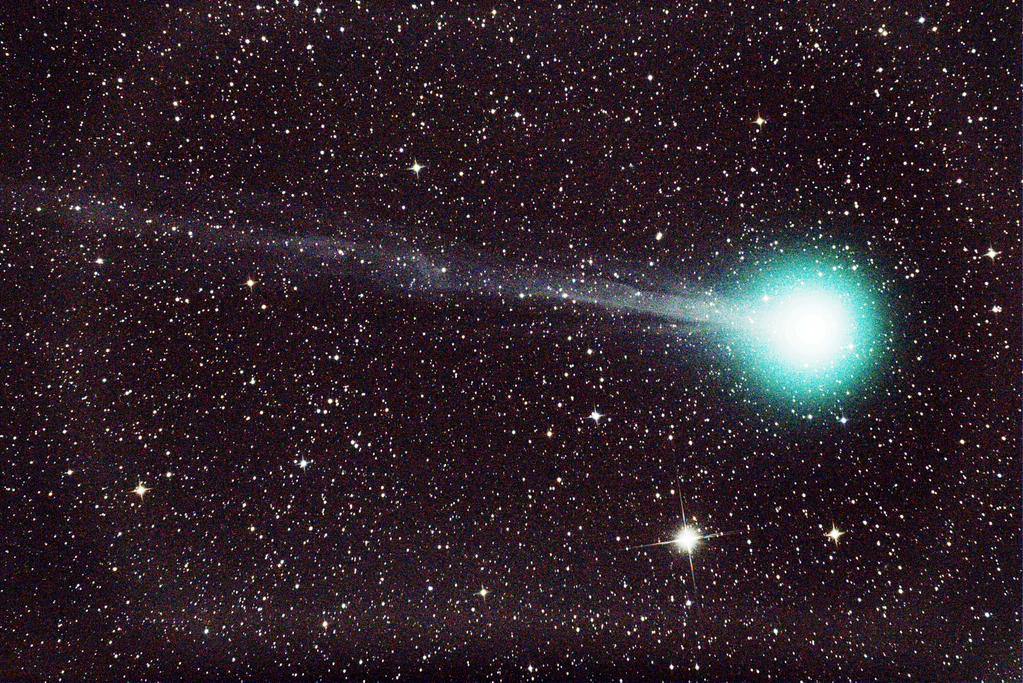Keeping warm? Yesterday marked the start of astronomical winter for the northern hemisphere, meaning long nights and (hopefully) clear, cold skies. But we’ve also got another reason to brave the cold this week, as Comet C/2014 Q2 Lovejoy is set to put on a show for northern hemisphere observers.
Already, Comet Q2 Lovejoy has been providing southern hemisphere observers with a fine celestial showing. Discovered by Australian comet hunter extraordinaire Terry Lovejoy on August 17th of this year as it glided across the constellation Puppis, Q2 Lovejoy has been brightening through early December ahead of expectations. We’ve already been getting some great images from Universe Today readers down south, and we can expect more in the weeks to come. This is Mr. Lovejoy’s fifth comet discovery, and many will remember how comet C/2011 W3 Lovejoy also survived a perilous perihelion passage just 140,000 kilometres from the surface of the Sun during the 2011 holiday season and went on to produce a brilliant display.
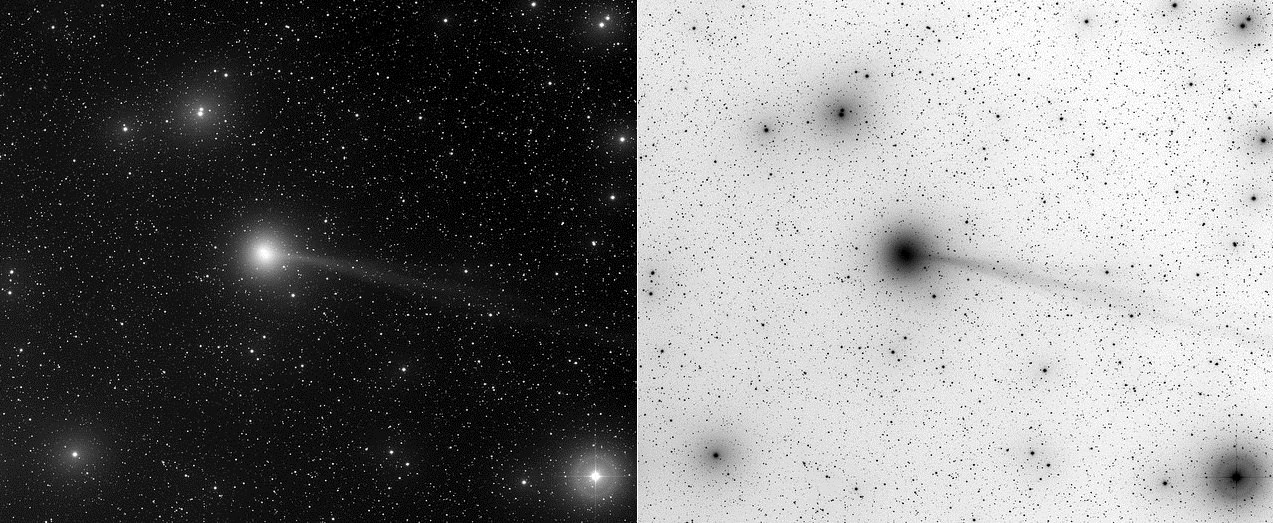
And although Comet 2012 S1 ISON failed to produce in 2014, we had a string of great binocular comets this year, including C/2014 E2 Jacques, K1 PanSTARRS, and A1 Siding Spring.
Currently shining at magnitude +5.5, Q2 Lovejoy is a fine target for binoculars or a small telescope as it crosses the southern constellation of Columba into Lepus just after Christmas Day. Sirius currently makes a good guidepost, as the comet sits about 19 degrees southeast of the brightest star in the sky. And speaking of Sirius, don’t forget to try your hand at spotting its white dwarf companion in 2015!
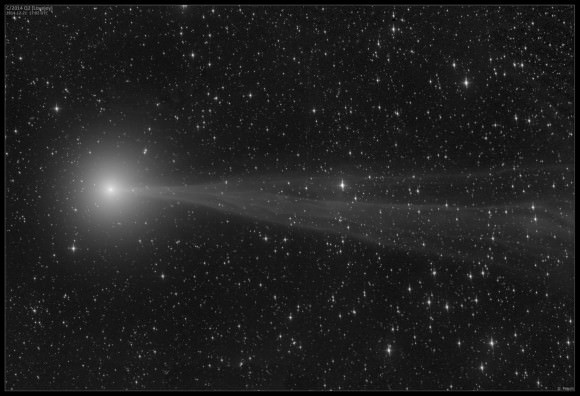
Q2 Lovejoy also has a high orbital inclination of 80.3 degrees relative to the ecliptic, which is good news, as it will be plunging rapidly northward as it makes its closest passage by Earth on January 7th at 70.2 million kilometres or 0.47 A.U.s distant. Note that not only will the comet pass extremely close to the globular cluster M79 (photo op!) on the night of December 29th, but will also pass within 10 degrees of the Pleiades in January before threading its way northward between the famous Double Cluster in Perseus and the Andromeda Galaxy.
Clouded out? You can catch Comet Q2 Lovejoy courtesy of Gianluca Masi and our good friends over at the Virtual Telescope Project live on January 6th and January 11th at 19:00 Universal Time/2:00 PM EST on both dates:

Expect Q2 Lovejoy to ride highest to the south around local midnight starting on January 1st, and transit the local meridian at 8-9 PM local by mid-month. Keen eyed observers have already managed to spy Q2 Lovejoy unaided from a dark sky site, and we expect this to be the general case for most observers by New Year’s Day. As of this writing, Q2 Lovejoy displays a fine coma 10’ wide with a 7 degree long, fan-shaped tail.
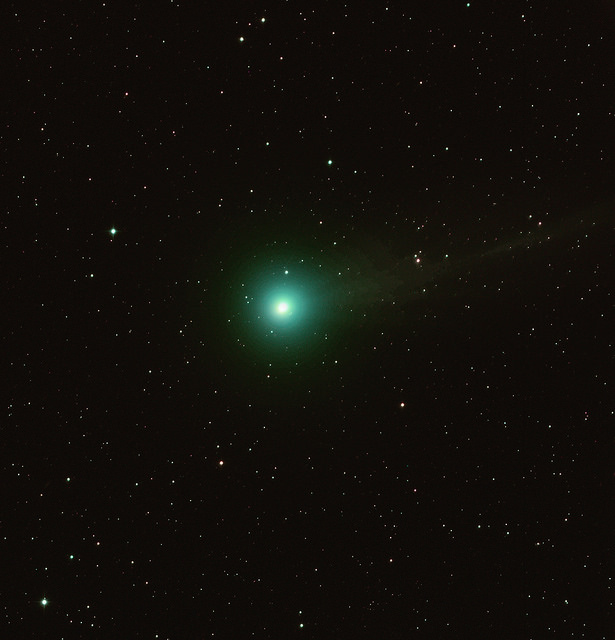
Here’s our handy blow-by-blow for Comet Q2 Lovejoy in the coming weeks:
December
28- Crosses into the constellation Lepus.
29- Passes less than 10’ — a third of the diameter of the Full Moon — from the 7.7 magnitude globular cluster NGC 1904 (Messier 79).
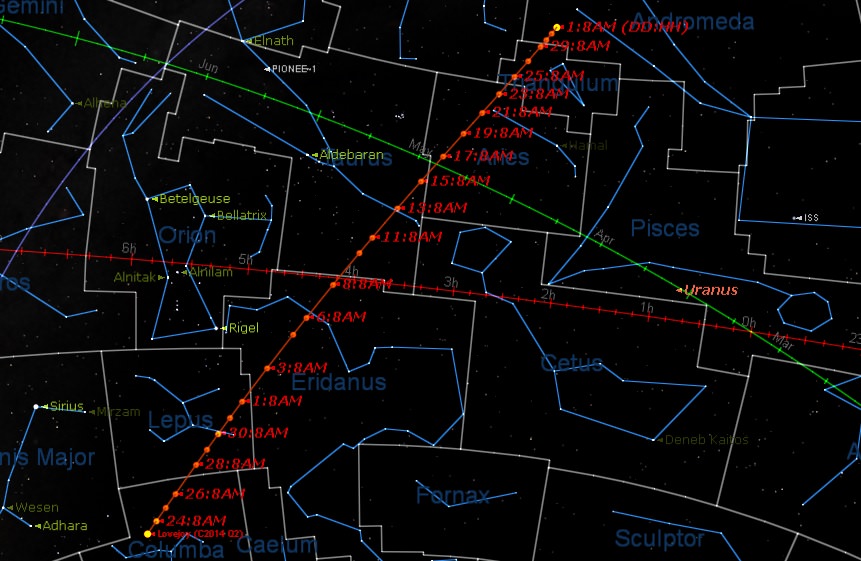
January
1- May break naked eye visibility at magnitude +6.
2- Passes into the constellation Eridanus and reaches opposition at 0.49 A.U.s from the Earth.
5- The Moon reaches Full, hampering observations.
7- May reach a peak brightness at +4th magnitude.
7- Passes closest to Earth 0.47 AU, moving at an apparent speed of almost 3 degrees a day.
9- Crosses the celestial equator into the constellation Taurus.
17- Crosses the ecliptic plane and into the constellation Aries.
20- Moon reaches New phase, marking a favorable span for observation.
22- Passes within one degree of the 3.6 magnitude star 41 Arietis.
25- Crosses into the constellation Triangulum.
30- Reaches perihelion at 1.29 A.U.
30- Crosses into the constellation Andromeda.
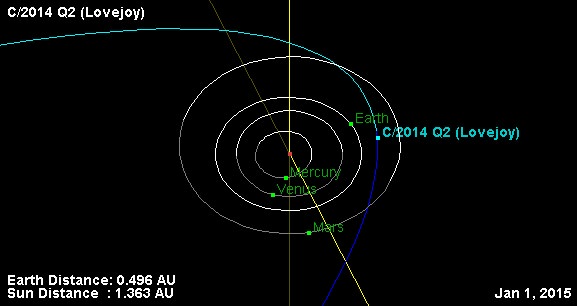
February
3- The Moon reaches Full phase, hampering observations.
4- Passes less than one degree from the 2.1 magnitude star Gamma Andromedae (Almach).
18- The Moon reaches New, marking a favorable span of time for observations.
20- Passes less than a degree from the +4th magnitude star Phi Persei and into the constellation Perseus.
March
1- May drop below naked eye visibility.
2- Crosses into the constellation Cassiopeia.
5- The Moon reaches Full phase, hampering observations.
11- Passes less than one degree from the +5 magnitude Owl Cluster.
16- Passes less than one degree from the 2.6 magnitude star Delta Cassiopeiae (Ruchbah).
20- The Moon reaches New, marking a favorable time for observation.
24- Crosses the galactic equator.
April
1- May drop below binocular visibility.
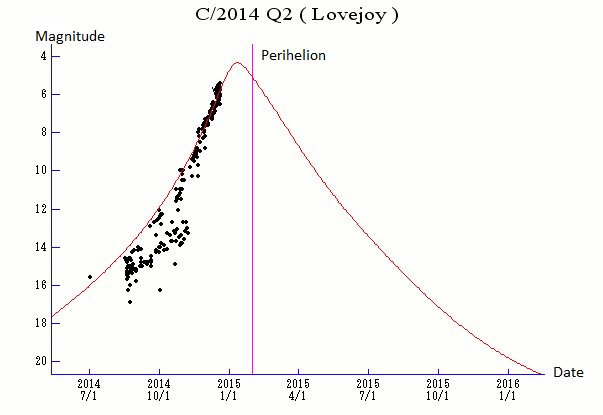
From there, Comet Q2 Lovejoy drops back below +10th magnitude and passes just a degree from the north celestial pole in late May as it heads back out of the inner solar system. Q2 Lovejoy was on a 13,500 year orbit inbound, and its passage through the inner solar system shortened its orbit by about 5,000 years. Just think, about 13 millennia ago, Mesolithic man was busy domesticating early farm animals. Did they, by chance, look up and catch sight of Comet Q2 Lovejoy? And who will be here to ponder its return passage eight millennia hence?
Comet hunting is fun and easy… we prefer to sweep the target area with our trusty Canon 15×45 image stabilized binoculars, though a common pair of 7x 50’s — often favored by hunters and bird watchers — will do just fine. The passage by +7.7 magnitude globular cluster M79 this week will provide a fine contrast in “fuzz balls…” Remember, in comets as in nebulae, the quoted magnitude is often dispersed over a broad surface area, making the objects fainter than a pinpoint star of the same brightness.
And Comet Q2 Lovejoy is the first of several binocular comets to look forward to in 2015. Right now, we’ve got our money on comets C/2014 Q1 PanSTARRS, 19P/Borrelly, C/2013 US10 Catalina, and C/2013 X1 PanSTARRS as possible contenders in 2015. And don’t miss +9th magnitude Comet 15P/Finlay, currently in outburst and playing tag with the planet Mars low in the dusk sky.
Watch this space (bad pun intended) this coming Friday for the low down on all things astronomical in 2015!
-Got pics of Comet Q2 Lovejoy? Send ’em in to Universe Today.

